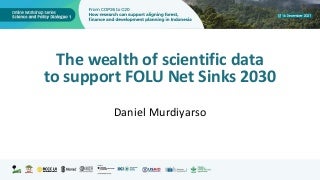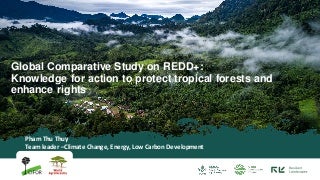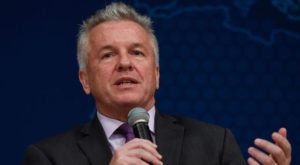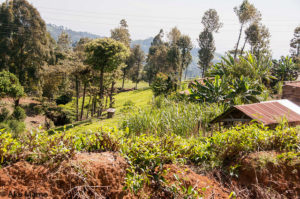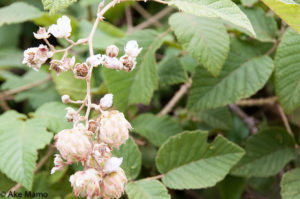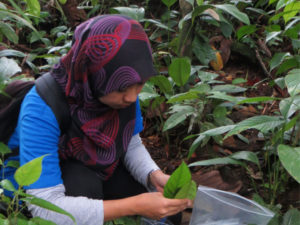There is a growing demand for cocoa. However, cultivation is dependent on ageing trees with low yields and increasing vulnerability to disease. There is growing concern about the environmental impact of cultivation in areas soil health and biodiversity. There is therefore an urgent need to make cocoa cultivation more efficient and sustainable to ensure a successful future. These challenges are addressed in Achieving sustainable cultivation of cocoa.
Part 1 reviews genetic resources and developments in breeding. Part 2 discusses optimising cultivation techniques to make the most of new varieties. Part 3 summaries the latest research on understanding and combatting the major fungal and viral diseases affecting cocoa. Part 4 covers safety and quality issues whilst the final part of the book looks at ways of improving sustainability, including the role of agroforestry, organic cultivation and ways of supporting smallholders. With its distinguished editor and international range of expert authors – including a number from CGIAR Research Program on Forests, Trees and Agroforestry (FTA) scientists – this collection will be a standard reference for cocoa scientists, growers and processors.
Part 1 Genetic resources and breeding
1. Taxonomy and classification of cacao: Ranjana Bhattacharjee, International Institute of Tropical Agriculture (IITA), Nigeria; and Malachy Akoroda, Cocoa Research Institute of Nigeria, Nigeria;
2. Conserving and exploiting cocoa genetic resources: the key challenges: Brigitte Laliberté, Bioversity International, Italy; Michelle End, INGENIC (The International Group for Genetic Improvement of Cocoa), UK; Nicholas Cryer, Mondelez International, UK; Andrew Daymond, University of Reading, UK; Jan Engels, Bioversity International, Italy; Albertus Bernardus Eskes, formerly CIRAD and Bioversity International, France; Martin Gilmour, Barry Callebaut, USA; Philippe Lachenaud, Centre de coopération internationale en recherche agronomique pour le développement, France; Wilbert Phillips-Mora, Center for Tropical Agriculture Research and Education, Costa Rica; Chris Turnbull, Cocoa Research Association Ltd., UK; Pathmanathan Umaharan, Cocoa Research Centre, The University of the West Indies, Trinidad and Tobago; Dapeng Zhang, USDA-ARS, USA; and Stephan Weise, Bioversity International, Italy;
3. The role of gene banks in preserving the genetic diversity of cacao: Lambert A. Motilal, The University of the West Indies, Trinidad and Tobago;
4. Safe handling and movement of cocoa germplasm for breeding: Andrew Daymond, University of Reading, UK;
5. Developments in cacao breeding programmes in Africa and the Americas: Dário Ahnert, Universidade Estadual de Santa Cruz, Brazil; and Albertus Bernardus Eskes, formerly CIRAD and Bioversity International, France;
Part 2 Cultivation techniques
6. Cocoa plant propagation techniques to supply farmers with improved planting materials: Michelle End, INGENIC (The International Group for Genetic Improvement of Cocoa), UK; Brigitte Laliberté, Bioversity International, Italy; Rob Lockwood, Consultant, UK; Augusto Roberto Sena Gomes, Consultant, Brazil; George Andrade Sodré, CEPLAC/CEPEC, Brazil; and Mark Guiltinan and Siela Maximova, The Pennsylvania State University, USA;
7. The potential of somatic embryogenesis for commercial-scale propagation of elite cacao varieties: Siela N. Maximova and Mark J. Guiltinan, The Pennsylvania State University, USA;
8. Good agronomic practices in cocoa cultivation: rehabilitating cocoa farms: Richard Asare, International Institute of Tropical Agriculture (IITA), Ghana; Victor Afari-Sefa, World Vegetable Center, Benin; Sander Muilerman, Wageningen University, The Netherlands; and Gilbert J. Anim-Kwapong, Cocoa Research Institute of Ghana, Ghana;
9. Improving soil and nutrient management for cacao cultivation: Didier Snoeck and Bernard Dubos, CIRAD, UR Systèmes de pérennes, France;
Part 3 Diseases and pests
10. Cocoa diseases: witches’ broom: Jorge Teodoro De Souza, Federal University of Lavras, Brazil; Fernando Pereira Monteiro, Federal University of Lavras and UNIVAG Centro Universitário, Brazil; Maria Alves Ferreira, Federal University of Lavras, Brazil; and Karina Peres Gramacho and Edna Dora Martins Newman Luz, Comissão Executiva do Plano da Lavoura Cacaueira (CEPLAC), Brazil;
11. Frosty pod rot, caused by Moniliophthora roreri: Ulrike Krauss, Palm Integrated Services and Solutions (PISS) Ltd., Saint Lucia;
12. Cocoa diseases: vascular-streak dieback: David I. Guest, University of Sydney, Australia; and Philip J. Keane, LaTrobe University, Australia;
13. Insect pests affecting cacao: Leïla Bagny Beilhe, Régis Babin and Martijn ten Hoopen, CIRAD, France;
14. Nematode pests of cocoa: Samuel Orisajo, Cocoa Research Institute of Nigeria, Nigeria;
15. Advances in pest- and disease-resistant cocoa varieties: Christian Cilas and Olivier Sounigo, CIRAD, France; Bruno Efombagn and Salomon Nyassé, Institute of Agricultural Research for Development (IRAD), Cameroon; Mathias Tahi, CNRA, Côte d’Ivoire; and Sarah M. Bharath, Meridian Cacao, USA;
Part 4 Safety and sensory quality
16. Improving best practice with regard to pesticide use in cocoa: M. A. Rutherford, J. Crozier and J. Flood, CABI, UK; and S. Sastroutomo, CABI-SEA, Malaysia
17. Mycotoxins in cocoa: causes, detection and control: Mary A. Egbuta, Southern Cross University, Australia;
18. Analysing sensory and processing quality of cocoa: Darin A. Sukha and Naailah A. Ali, The University of the West Indies, Trinidad and Tobago;
Part 5 Sustainability
19. Climate change and cocoa cultivation: Christian Bunn, Fabio Castro and Mark Lundy, International Center for Tropical Agriculture (CIAT), Colombia; and Peter Läderach, International Center for Tropical Agriculture (CIAT), Vietnam;
20. Analysis and design of the shade canopy of cocoa-based agroforestry systems:Eduardo Somarriba, CATIE, Costa Rica; Luis Orozco-Aguilar, University of Melbourne, Australia; Rolando Cerda, CATIE, Costa Rica; and Arlene López-Sampson, James Cook University, Australia;
21. Organic cocoa cultivation: Amanda Berlan, De Montfort University, UK;
22. Cocoa sustainability initiatives: the impacts of cocoa sustainability initiatives in West Africa: Verina Ingram, Yuca Waarts and Fedes van Rijn, Wageningen University, The Netherlands;
23. Supporting smallholders in achieving more sustainable cocoa cultivation: the case of West Africa: Paul Macek, World Cocoa Foundation, USA; Upoma Husain and Krystal Werner, Georgetown University, USA.
This book is available for order from the publisher, Burleigh Dodds Science Publishing.





